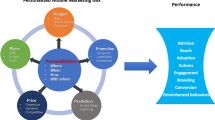Abstract
The set of functionalities provided by advanced mobile phones is significantly increasing. However, the small size of mobile phone user interfaces makes it difficult for the user to deal with this large number of functionalities, which could reflect negatively on user performance and the efficiency of mobile phone functionalities. In this paper, we designed and developed an adaptive task-based functionality called ATF on mobile phones, where the task we focused on was to predict the next contact that the user is most likely to call. Furthermore, we conducted comprehensive evaluation of our approach. We show that our approach can successfully predict contacts that a user will most likely call next. Our results uncover the frequency and pattern of regularity in making mobile phone calls and suggest promising avenues for future work for optimising tasks (beyond phone calls) performed with the mobile phone.
































Similar content being viewed by others
References
Bridle R, McCreath E (2005) Predictive menu selection on a mobile phone. In: Workshop W7 on mining spatio-temporal data, Portugal
Kamisaka D, Muramatsu S, Yokoyama H, Iwamoto T (2009) Operation prediction for context-aware user interfaces of mobile phones. In: Applications and the internet, SAINT ‘09 ninth annual international symposium, pp 16–22, July 2009
Andersson E, Isaksson I-M (2007) Exploring alternatives to the hierarchical menu structure used in mobile phones. In: Department of computing science. Master of computing science: UMEA University, April 2007
Loke SW, Almagrabi A (2009) Hierarchical role-specific task-based user interfaces for the mobile phone. In: Joint conferences on pervasive computing (JCPC), pp 495–498, December 2009
Tonder Bv, Wesson J (2008) Using adaptive interfaces to improve mobile map-based visualisation. In: Proceedings of the 2008 annual research conference of the South African Institute of Computer Scientists and Information Technologists on IT research in developing countries: riding the wave of technology Wilderness, South Africa, ACM, pp 257–266
Langley P (1999) User modeling in adaptive interfaces. In: Proceedings of the seventh international conference on user modeling Banff, Canada, Springer, New York, Inc., pp 357–370
Huang S-C, Chou I-F, Bias RG (2006) Empirical evaluation of a popular cellular phone’s menu system: theory meets practice. J Usability Stud 1:1–108
Bostrom F, Nurmi P, Floreen P, Liu T, Oikarinen T-K, Vetek A, Boda P (2008) Capricorn—an intelligent user interface for mobile widgets. In: Proceedings of the 10th international conference on human computer interaction with mobile devices and services Amsterdam, The Netherlands, ACM, pp 327–330
Bridle R, McCreath E (2006) Inducing shortcuts on a mobile phone interface. In: Proceedings of the 11th international conference on intelligent user interfaces Sydney, Australia, ACM, pp 327–329
Fukazawa Y, Hara M, Onogi M, Ueno H (2009) Automatic mobile menu customization based on user operation history. In: Proceedings of the 11th international conference on human-computer interaction with mobile devices and services Bonn, Germany, ACM, pp 1–4
Butler J, Morrice DJ, Mullarkey PW (2001) A multiple attribute utility theory approach to ranking and selection. J Manag Sci 47:800–816
Author information
Authors and Affiliations
Corresponding author
Rights and permissions
About this article
Cite this article
Barzaiq, O.O., Loke, S.W. Adapting the mobile phone for task efficiency: the case of predicting outgoing calls using frequency and regularity of historical calls. Pers Ubiquit Comput 15, 857–870 (2011). https://doi.org/10.1007/s00779-011-0401-5
Received:
Accepted:
Published:
Issue Date:
DOI: https://doi.org/10.1007/s00779-011-0401-5




